-
Posts
1,752 -
Joined
-
Last visited
-
Days Won
5
Content Type
Profiles
Forums
Resource Library
Events
Gallery
Blogs
Store
Community Map
Posts posted by GSR 800
-
-
1 hour ago, 226 Abhann na Suire said:
That’s brilliant!! Very exciting and they look very very well indeed! I was never mad about the orange triangle on the cabside of the artist’s impression images so I think this new livery looks much better without it.
A few queries though, does anyone know is there an immediate confirmed plan ready to go for the next phased order of trains…? I presume they’re waiting for the Maynooth depot to be built and line electrified before they order the next batch…? And where will this fleet be maintained between now and the Maynooth depot coming online? Does anyone know how the fast charging at Drogheda before the return journey will work…? The article says it’ll take ‘under an hour’ but with a proposed every-10-minute service, is this really doable?
They do look brilliant though and I have to say charging points at every seat is a huge plus too! And with their longer distance battery capabilities and wide scale operation, for once Ireland is out in front for public transport infrastructure!!
Fleet will be maintained at Drogheda for now iirc. Valeting depot at Connolly is to get demolished/rebuilt to make way for new facilities there. I'd have thought they'd have started building infrastructure for it all by now...
-
 1
1
-
 1
1
-
-
-
1 hour ago, leslie10646 said:
Not to be outdone, I returned to the lineside tonight in POURING RAIN - you can hear the rain beating on my hood!
Not every day a Bulleid Pacific passes within a mile of the house! Like @Galteemore, this is my "home line" - where I timed engine doing 97mph in 1967.
A very grey scene, but not lacking in atmosphere - she was four minutes early with over 400 tons behind the tender. At least it shows that SMOKE DEFLECTORS REALLY DO WORK!
"Without wishing to be pedantic, a Britannia is merely an enlarged Atlantic.
For something really terrific, see a Bulleid Pacific!"
-
 3
3
-
-
19 hours ago, Mayner said:
The GSR in the 1930s in a way was a bit like the UTA wanting to replace loss making rail services with buses with no real long term need for a fleet of 'modern' steam locos for branch and secondary duties. The GSR proposed a series of closures in the mid-late 1930s that would have closed most branch and secondary lines such as the West Cork.
In a way the GSR had a surplus of 4-6-0s for the Cork Line and the 27 Woolwich filled the bill in terms of a modern mixed traffic loco for main line work. The GSWR 333 Class supplemented by the 1930s built 342s (both classed as D4) were a useful mixed traffic design which proved themselves capable of working passenger trains on the South Eastern, Rosslare Route and popular locos for working excursion trains.
To take a more conservative approach, one could perhaps build larger numbers of something akin to the DSER moguls and the GSWR J4 class 0-6-0s as competent, relatively modern designs.
-
25 minutes ago, Hawkerhellfire said:
"An absolute tub of an engine"

Sounds like it could have been a timing issue, combined with being worn out. Milne described her as 'powerful' but in need of excessive repair. My idea would be that she'd be the prototype, and modifications could be made to the production batch to suit. Would need to get to the bottom of this steaming issue. The drawing office at Inchicore studied the work of Chapelons streamlining of steam passages for the 800s, and the result (combined with the massive boiler) was a very free steaming engine.
-
 1
1
-
-
8 minutes ago, Horsetan said:
The GSR didn't exist until 1925.
typo for GSWR presumably
-
37 minutes ago, Hawkerhellfire said:
850 had a fair bit more wrong with her than a tendency to roll. Poor steaming and and a habit running hot slidebars and bearings from memory. She was a handsome engine though.
I was only thinking of 850 yesterday and her accident running into a turntable pit. Does a picture exist of that event?
Any sources for the poor steaming? The issue with running hot was solved by replacing the lightweight motion.
-
30 minutes ago, Horsetan said:
In terms of £££, what budget was available to the GSR during that period for building new locomotives?
What were the building costs of 800-802, and 850? How much money was left after that?
Note 850 was made possible partly because it made use of some existing Woolwich Mogul parts.
The impression I get is that, money being somewhat scarce, the GSR stuck to the conventional principles that it saw as being cost-effective, or cheap. If the 25 engines of the 342/670/700/710 had not been built, what could the GSR have created for the money not spent?
Innovation tends to cost, so developing a new mixed-traffic design, with Walschaerts outside motion, may not have resulted in as many as 20 engines. There would have had to have been some sort of testing of the initial tank and tender designs to see if they really were of universal use, before asking for approval to build more.
In the case of the 2-6-0, would all-new tenders have been built for them, or salvaged from older withdrawn engines? We don't know.
I'm also looking at the W class moguls in the North which were introduced in 1933:
- As a contemporary design, what did they cost the LMS(NCC) to build?
- Would they have been suitable for use on the GSR network and, if so, on which routes?
- Would it have been realistic for the GSR to ask permission to test a W or two? If such permission was forthcoming and the engine found suitable, would the LMS have then agreed to build them for the GSR? What would that have cost?
800s were 12k a pop, not a clue for 850, nor the NCC locos. the GNRI V class cost just under 6k a pop sans tender, with the SG3s costing just under 9k a pop with tender.
I'm unsure of the axle load on the moguls, but on the Jeeps it was 17.8 tons, which was too heavy for the Warrenpoint branch (though the UTA stopped caring about that toward the end). Secondary routes in the Republic seemed to have a limit around 16-17 tons.
Innovation does cost money, but modern 'standard' locos with everything being 'get-at-able' as Maunsell would reduce downtime quite a bit, and building locos in bigger numbers brings down cost and maintenance further. Tenders would almost certainly be second-hand on the moguls. If the GSR move toward a policy of shorter, more regular workings they may also bring in more money as they are better able to compete with road traffic.
26 minutes ago, minister_for_hardship said:Not offence, but (usually said by those who tend to offend) the 800 class were a waste of resources given their limited usefulness and smack of a vanity project. As far as I can see built for just one purpose, to start out of Cork without a pilot.
Perhaps with a bit more thought, the J15 Nua class could have been improved from the disappointments they turned out to be? A Jeep-like loco would have been an ideal, go most anywhere loco, but unlike today there was no shortage of operational turntables for tender engines.
OHLE was tried and trusted by the 20s and 30s, perhaps that could have been adopted for Dublin suburban rather than the Drumm units in a what if scenario?
I'll (shockingly) be keeping the 800s for my own alternate timeline. They are built toward the tail end of the GSR at any rate.
The problem with electrification, especially OHLE, would be money. It is extremely expensive to build. However I do wonder, considering the Southern (in Britain) was electrifying with third rail, if it could make its way over here?
If the 850 can be refined somewhat to iron out the kinks, I think it has the potential to be the Southern Jeep counterpart. Clements and McMahon consider a 2-6-4 based off the Woolwich design as was done in Britain, but rule it out as a go anywhere due to axle load. 850 has an axle load of 16 tons. Even if modifications bring that up to 16.5 or 17 it'd still be quite good.
-
 1
1
-
-
Recently I've been reading through the big green book, and have been considering what might have been. The GSR built few locomotives in its time, and aside from 850 and the 800s, these designs were quite conservative and of questionable use. The GSR was of course, quite a cash strapped company, but nonetheless when pushed could produce powerful, modern, even innovative engines, similar to the GSWR and their 500s.
The idea for this is what could have been built or done better with the resources available.
The GSR built 5 J15A's and 10 J15B's, the former of extremely conservative design and pretty crap, the latter comparing poorly to the rebuilt J15s they were built to replace. The tank engine version of the 710s were the five 670 tanks, which were considered too slow and outdated.
Also built were five 342 class 4-4-0s. Pretty good locos with a light axle load, but again a strangely conservative design with their outside axle frames on the bogie.
850 was a good, powerful locomotive that I think could make a good template for a standard GSR tank locomotive. One of the main issues with it is that she apparently rolled side to side at speed. Presumably this is a topweight issue? Perhaps having the tanks with a section deepened after the motion (akin to LMS practice) could go some way to addressing this? Interestingly, the 820 pacific tank design has deepened tanks, indicating a lesson learned from 850?
The 800s, fast, powerful engines, though with quite limited range.
I'm thinking the 670s, 700s, 710s and 342s all get thrown out. Whats needed then is a mid-sized, decently powerful tender loco with a light enough axle load (16/17 tons), along with a tank engine for suburban and general working also.
If we sort out 850's rolling issue and drop the lightweight motion, we have a template for both the tank locomotives, along with a 2-6-0 mogul version of them. Replacing on a like for like basis, we could end up with 10 moguls and 10 tank locomotives of a modern, useful design for the GSR that can go almost anywhere on the network. My one concern regarding the use of moguls on services is that the Woolwich were apparently overloaded and thus needed to be thrashed on the heavy expresses. A mix of utilising Milne's proposals of shorter trains, and putting some of the 400s out on the heavier Midland trains, at least before they are split at Mullingar/Athlone could go some way to alleviating this, and thus gives more room for the 800s on the Cork line.
Clements and McMahon consider the ideal standard loco for Irish railways to have been something along the lines of an Ivatt class 2, designed to exploit the more generous Irish loading gauge. 850 has a very similar tractive effort, adhesion weight, etc, but with bigger cylinders and driving wheels.
Thoughts and criticism appreciated.
-
 1
1
-
-
How was loading achieved, lobbed under a grain silo and filled?
-
Excellent work as always Killian.
I am a great believer in the potential for 3d printing, especially for the Irish steam scene. The great challenge for RTR Irish Steam is the sheer variety of classes and variants. This example illustrates the possibilities of bringing these to life and taking full advantage of the ever-widening range of Irish RTR rolling stock coming online. Killian's excellent work shows the level of detail that can be achieved.
-
 3
3
-
 1
1
-
-
8 hours ago, jhb171achill said:
Fascinating stuff.
The clip of the railway wagons, going by the NCC lettering style, is late 1920s, even up to mid 30s. The GNR vans in particular look very “modern” for this era.
I know virtually nothing about things that float rather than run on rails, so I can’t suggest whether the maritime clips are the same age.
Looks like a lot of the WW1 mass-built tramp steamers, there's a sail vessel there, and the cross channel steamers look to be of 1890s-early 1900s vintage. I would say this is the early 1920s. The 'Melmore head' freighter picked out in the footage was built in 1918, and sunk by a uboat in 1942, so its definitely interwar.
If I can pin down the liner in drydock can probably have a near exact date
-
 2
2
-
 1
1
-
-
19 minutes ago, IrishTrainScenes said:
Sorry, This is just information I have that I either was informed of or observed for myself.
During the autumn or winter months there tends to be a period of non stop failures, and that can happen for up to 2 weeks.
I will send an updated version tomorrow.
during leaf fall early morning (and possibly late night idk) Enterprises are subbed by ICRs.
They are also preferred for winter, as if a loco engine decides its not going to cooperate with cold weather its the train out of action. On an ICR (or any DMU railcar) it has a large degree of redundancy so usually isn't an issue, or can at least limp to terminus.
-
2 hours ago, commerlad said:
Kit Built OO Gauge County donegal railway joint Committee | eBay
Do not know who the seller is trying to kid here.
I sent a message to tell him and got a snotty reply saying he knows what it is!
Just wish he would tell the rest of us then.
Some horrible lab experiment hybrid jinty USA tank gone wrong?
-
-
2 minutes ago, Westcorkrailway said:
If cork is getting 29s then the re-flooring and intirior has to be almost gutted!
Long live the mark 4s. There not perfect but there my favourite!
AFAIK seats on 29ks aren't being replaced, "all" that's being done is floors, cleaning and replacing graffitied seat backs
-
51 minutes ago, 226 Abhann na Suire said:
Ahh ok, it’s a slight. shame, but I suppose the MkIV’s are definitely still very comfortable and they’re probably right not to, money could be spent elsewhere like refurbishing the 29k’s
29k reflooring is currently underway.
13 hours ago, 226 Abhann na Suire said:Irish Rail announced today that they’re refurbishing the CityGold carriages on their MkIV sets. Looking very well I have to say but I presume that a similar upgrade - better lighting, wireless charging, more sockets and leather seat covers - is going to befall the standard class coaches too…? Anyone heard anything?
Upgrading is always good, IIRC there are no plans to replace the Mark 4s in the near future. I imagine if they are it will be with DEMUs rather than 22ks. I am unsure about the cream colour scheme, new carpeting for the floors would have refreshed the carriages significantly.
-
 1
1
-
-
On 20/2/2024 at 9:35 PM, DERAILED said:
According to IE's latest Facebook post: https://www.facebook.com/iarnrodeireann
Inter-city trains are to become even ridiculous - see image. Hot on the heels of this comes more speculation about terminating Rosslare trains at Wicklow or Greystones....and it's not even April 1st.
Nothing ridiculous about it. Badly needed additional bike space + standing room, and likely to be added to consists so another car per train.
-
 4
4
-
-
6 hours ago, Louth said:
When I heard of Irish government investment in cross-border infrastructure, I really expected a major upgrade of the Dublin-Belfast rail line. €50 mil for Casement Park and a paltry €12.5 mil for the rail service, not to mention the €600 mil for the A5 road. Metrolink will cost €9.5 billion with a connection to the Irish Rail system at Tara St and Drumcondra only. No joined-up thinking there. It all just doesn't make sense.
Connolly is going to be at capacity with accelerated Enterprise timetable and Dart +, and Tara Street allows one to travel to Connolly or Pearse within 5-10 minutes in either direction. Link to Drumcondra allows access to services on Cork mainline (hopefully the station at Heuston platform 10 will be completed to facilitate a more cohesive overall network)
The sum for the enterprise is quite low, I suspect that may be in part due to any more significant investment in Enterprise services to come when the 201s + DDs are replaced with tri-mode sets. Whatever to be said about the complexity of the Dart + and the power transfer from overheads to batteries, I'm sure a tri-mode will cause no hassle at all....
-
 1
1
-
-
13 hours ago, jhb171achill said:
If they took the amplifiers out of them, and cleared out 20 years of litter, maybe they'd be OK..............
that is being done, one at a time...
-
 1
1
-
-
29 minutes ago, irishrailways52 said:
true capital of ireland
just wondering why so many people hate the 29000s
Noisy old yokes, floors are so bad they are being replaced
-
 1
1
-
-
7 hours ago, Westcorkrailway said:
It’s what we get for calling the 29000 rubbish!!!
You'll have no shortage of them once the Dart + are up and running
-
13 hours ago, Darrman said:
https://www.rte.ie/news/regional/2024/0124/1428430-dart-airport/
A bit of an old report, but this has the Irish Rail CEO suggesting it could be done in about five years. He also did not cost it, nor is it funded. The closest to a detail you can get is him suggesting going over the M1.
While I think having an airport link is important, I am under no illusion that it will be built - nor do I have any faith in the Dublin Metro being built either. Pretending it will be built for a moment, I'd say the service should either be direct to Connolly or maybe allow a stop at Clongriffin for people to change onto locals. Of course, there's only so much capacity on the line and it's jammed enough as is. Divert them to the new Docklands station when/if that's built to relieve Connolly? Won't fix Enterprise traffic jams without extra tracks, which would require a lot of construction in its own right. A nice idea, but would need a lot of work to do correctly.
Good excuse to quad track out to Drogheda, which they will need to do anyway whether they want to or not.
-
46 minutes ago, dave182 said:
I was looking at some images of the traversers at Inchicore Works, specifically the longer one at the carriage shops, and that got me wondering if Inchicore had anything like a small roadrailer or locotractor for moving coaches and locos in and out of the sheds onto the traverser? Specifically in the 80s and 90s time period. Anyone can shed some light on this?
On another thread on this forum, member @Niles mentions there is a Zephir LOK 1400 at Inchicore. This might be a more recent addition.
shunting on and off traversers is done with a forklift with a coupling attachment these days. Dunno about 80s and 90s
-
 1
1
-
.png.c363cdf5c3fb7955cd92a55eb6dbbae0.png)
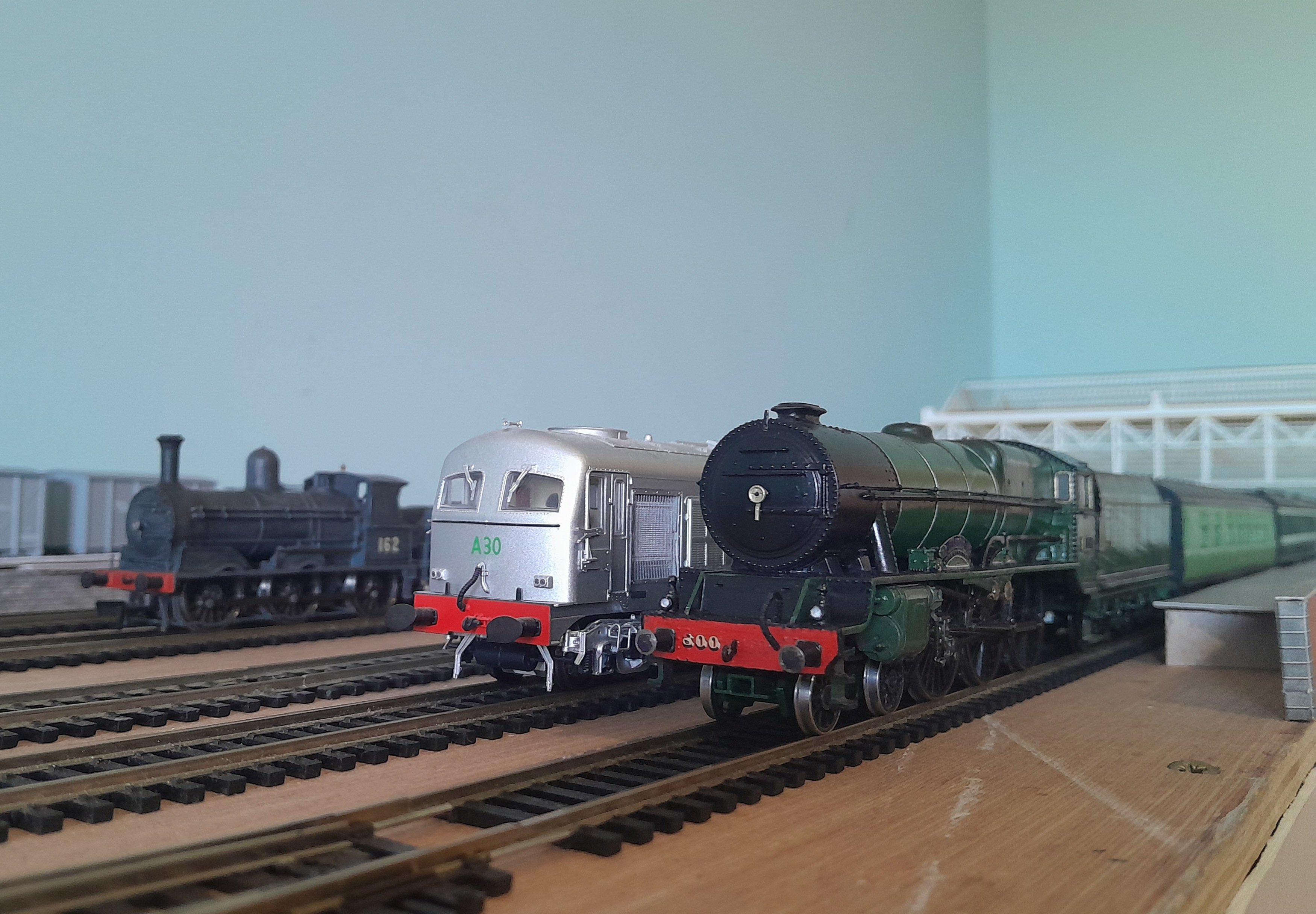
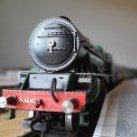



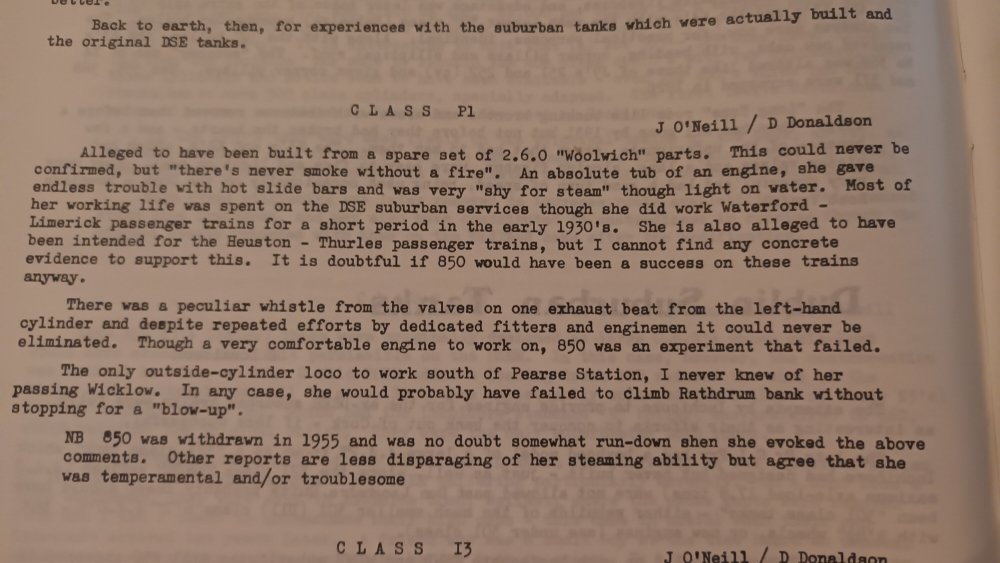

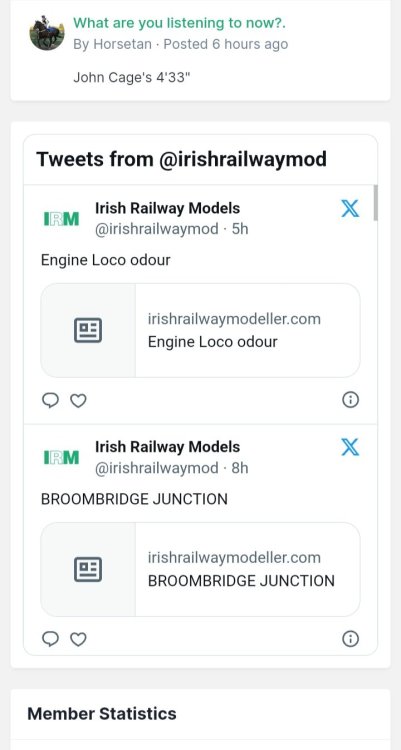


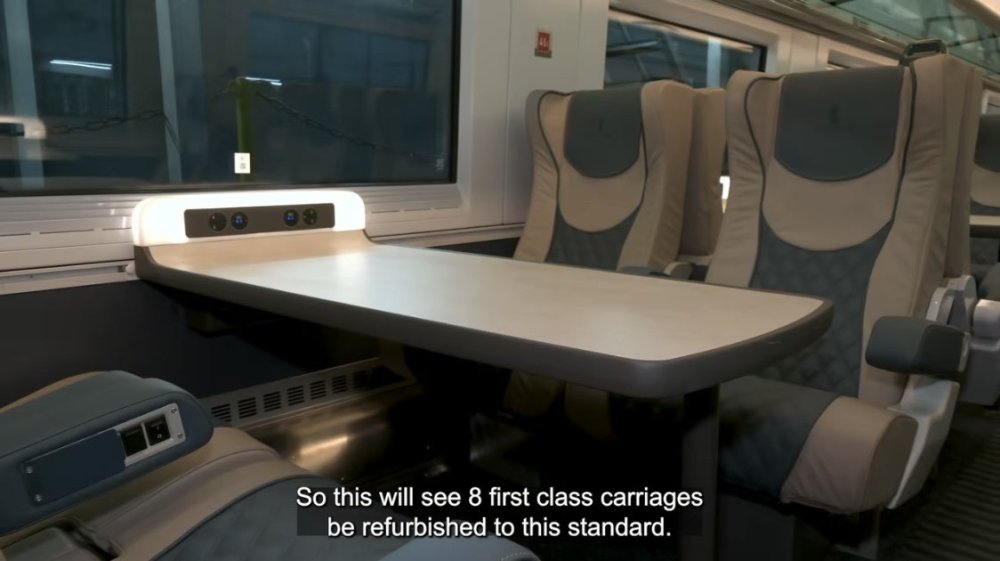
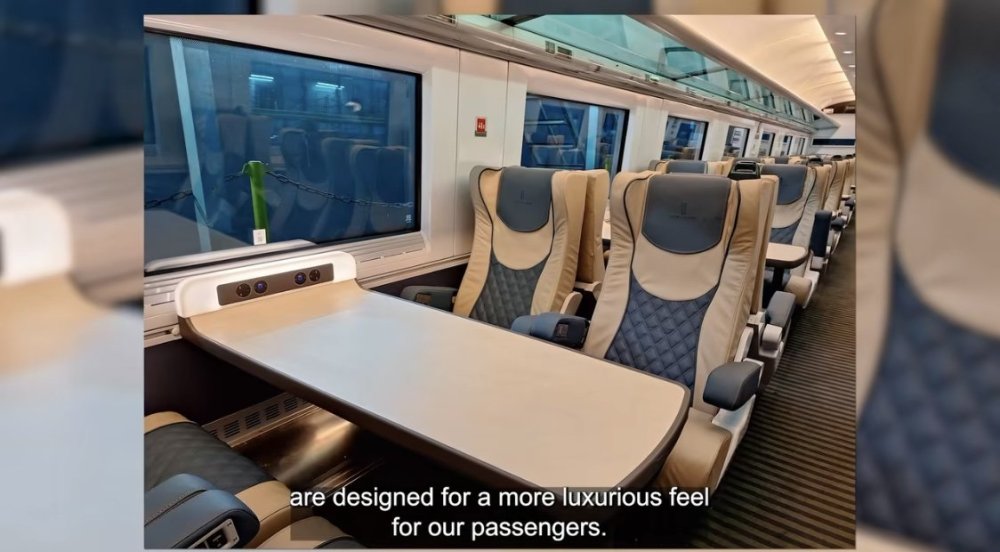
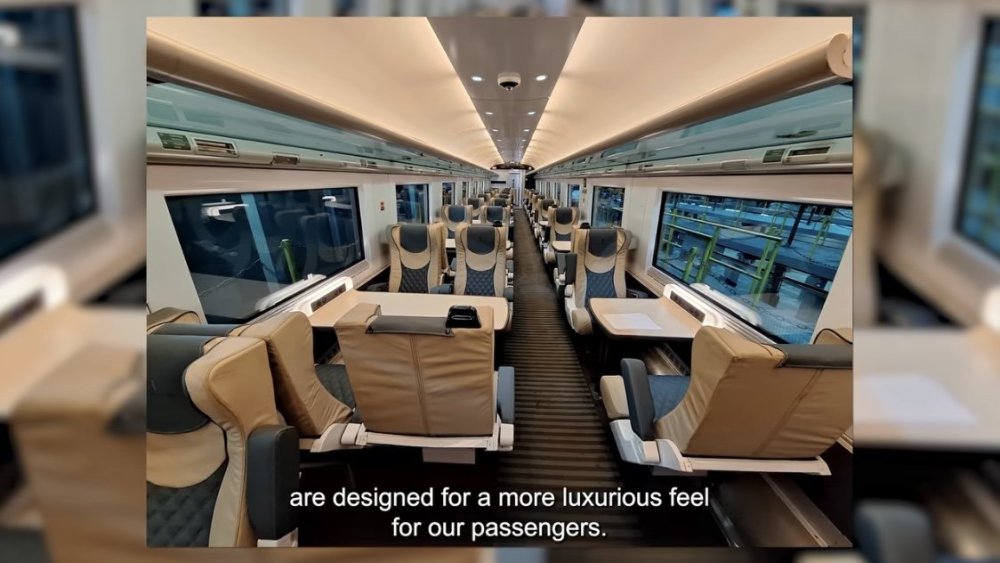
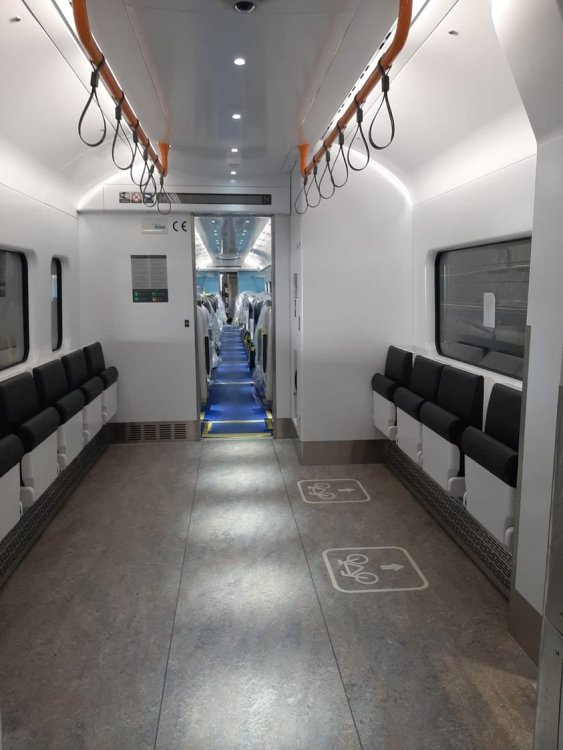
An Update on the New Alstom battery electric trains
in What's happening on the network?
Posted
The long ugly concrete brick 2 road structure directly adjacent to platform 1